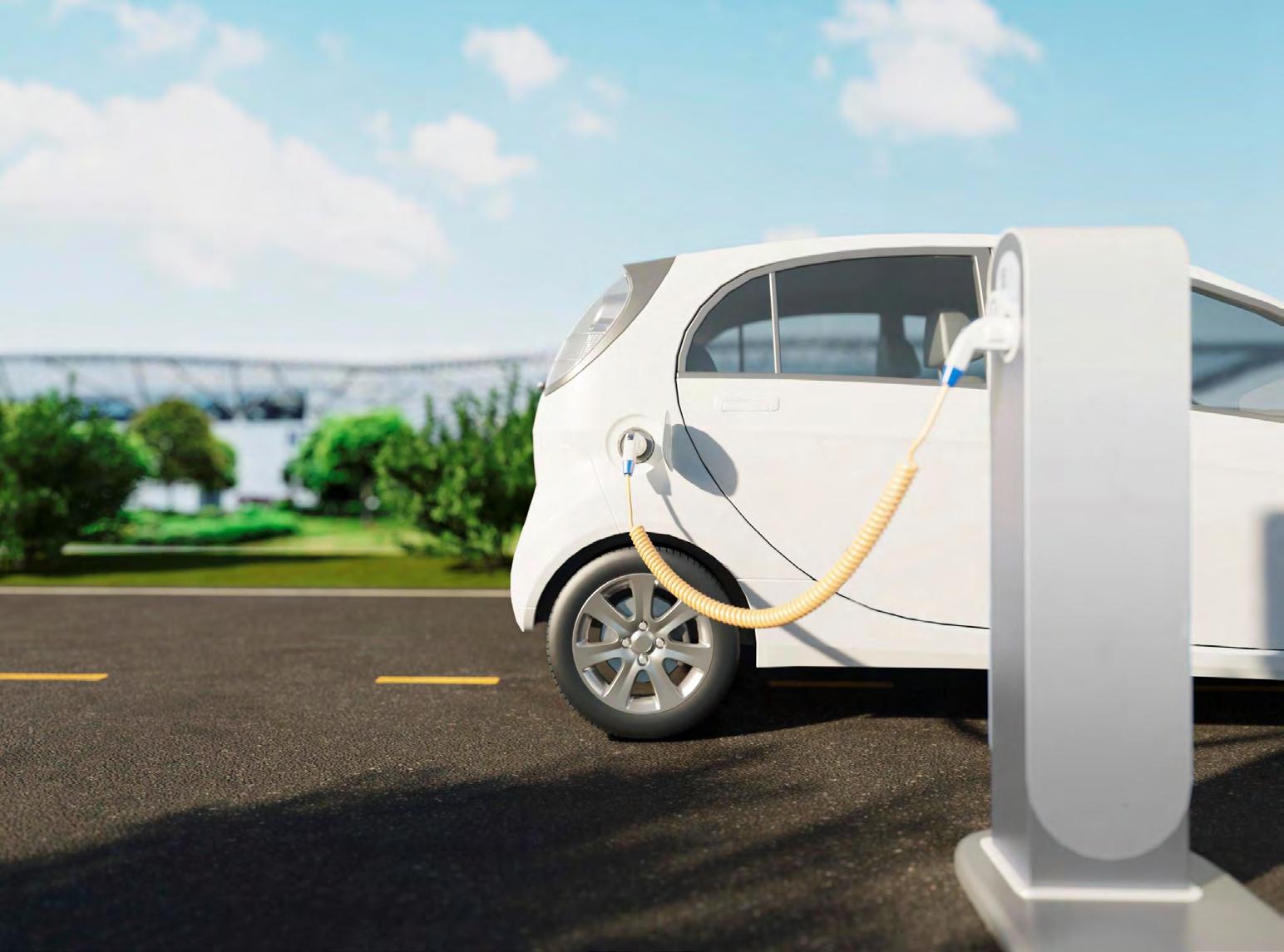
3 minute read
WHAT IS BEING DONE TO ADDRESS CHALLENGES IN EV CHARGING INFRASTRUCTURE
Nowadays, the growing popularity of electric vehicles and the increasing number of brands offering electric models highlight the importance of having nearby and accessible charging infrastructure. As more people embrace sustainable mobility, ensuring the availability of convenient charging points close to homes and workplaces becomes essential. This not only promotes sustainability but also provides convenience and confidence to drivers committed to a future of clean and environmentally friendly transportation.
Despite the surging interest in electric vehicles, the current public charging infrastructure in the United States remains inadequate compared to the number of electric cars on the roads. Insufficiently distributed charging points significantly limit the use of electric vehicles, raising concerns about their range and practicality, potentially deterring prospective buyers interested in sustainable mobility. To boost electric vehicle adoption and enhance the user experience, substantial investments in expanding the public charging network are imperative, alongside active promotion of its accessibility nationwide.
Advertisement
In addition to the infrastructure challenges, there is a concerning increase in failed charging attempts at public stations. According to J.D. Power’s Electric Vehicle Experience Public Charging Study, the rate of failed charging attempts rose from 15% in the first quarter of 2021 to over 21% in the third quarter of 2022. Nearly 39% of charging visits were unsuccessful last year, with reasons including out-of-service chargers, software issues, payment processing errors, and vandalism.
30,000 chargers in the United States and Canada
Recognizing this issue, seven major automakers are joining forces to establish a joint venture that will build a large network of fast electric vehicle chargers across North America, aiming to make electric vehicles more appealing to consumers. General Motors, BMW Group, Honda, Hyundai, Kia, Mercedes-Benz, and Stellantis plan to install at least 30,000 chargers in the United States and Canada.
The first of the new charging stations, a pivotal step in enhancing the electric vehicle charging infrastructure, is set to open next summer. The companies have revealed that the initial roll-out will begin in the United States, marking a significant milestone in their mission to provide convenient and reliable charging options for electric vehicle owners. Subsequently, the expansion will extend to Canada, further contributing to the growth of sustainable mobility across North America.
“GM’s commitment to a fully electric future focuses not only on offering electric vehicles that our customers love but also on investing in charging and working across the industry to make it more accessible,” said GM CEO Mary Barra in a statement. “The better the experience people have, the faster electric vehicle adoption will grow.”
Lack of charging infrastructure
A recent survey by Cox Automotive revealed that around a third of respondents cited the lack of charging infrastructure as the primary reason for not buying an electric vehicle, although that percentage dropped to 40% in 2021. At the same time, the percentage of people considering purchasing an EV increased to over 50%, compared to 38% two years ago.
The new charging stations will be strategically located near major cities and along popular travel routes, equipped with multiple high-power fast chargers that can replenish an electric vehicle’s battery to around 80% in approximately 30 minutes.
To ensure user-friendliness, the chargers will be compatible with each automaker’s respective mobile applications, allowing seamless location and initiation of charging. Furthermore, vehicles from other manufacturers, not just the seven mentioned, will also be able to charge at these stations. The new joint venture will depend on funding from the automakers and federal government grants to construct new electric vehicle chargers.
GM and Mercedes have previously declared their intentions to embrace Tesla’s North American Charging Standard, whereas the other automakers have not made any public statements regarding adopting this standard. As a result, the charging stations developed by the new joint venture will feature both NACS cables and the more commonly used CCS (Combined Charging System) cables, which are utilized by the majority of other electric vehicles.
This new joint venture alone would significantly increase the current number of fast chargers in the U.S., where around 35,000 NACS and CCS chargers currently exist. However, with the expected growth in the number of electric vehicles in the coming years, many more chargers will be required. The National Renewable Energy Laboratory estimates that by 2030, when the planned emissions standards announced by the Biden administration would require half of all new vehicles sold in the U.S. to be electric, approximately 182,000 fast chargers will be needed.
Report: Sebastian Marin Jaramillo











